
















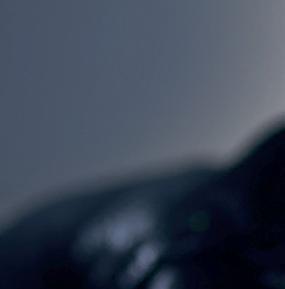



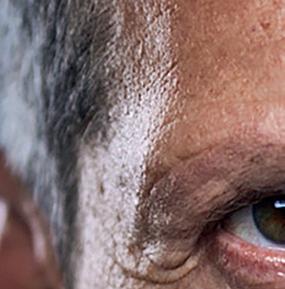




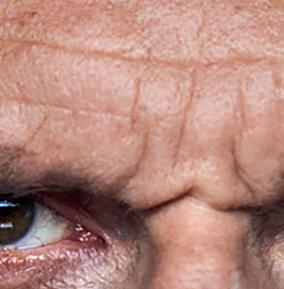
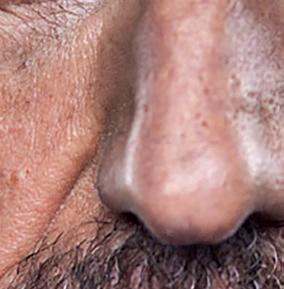
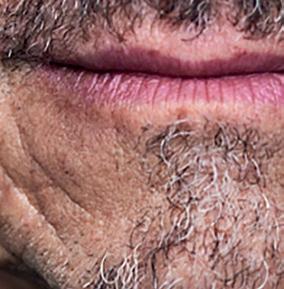
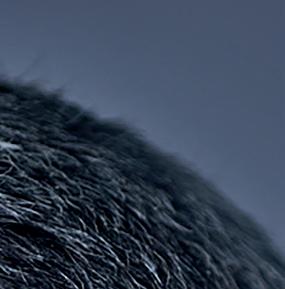

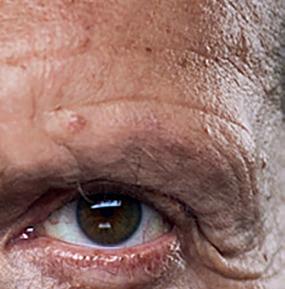
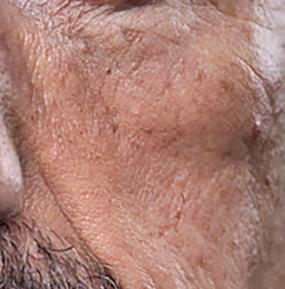
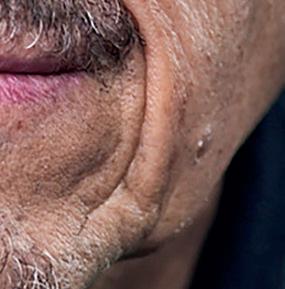

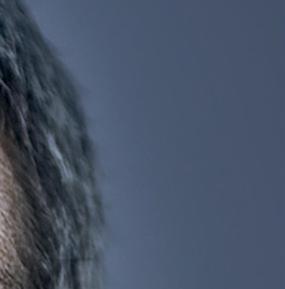





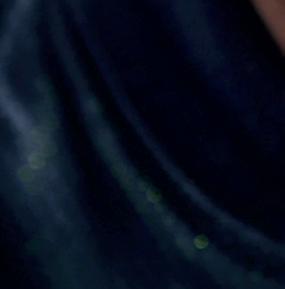

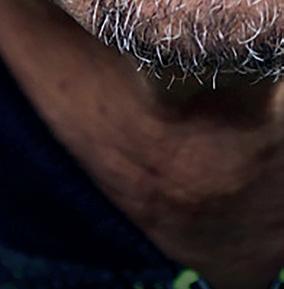
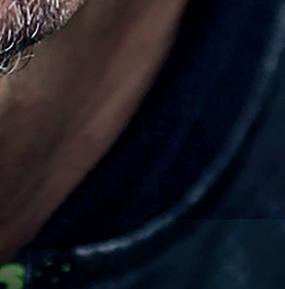
THE NO.1. SUNDAY TIMES BESTSELLER














































THE NO.1. SUNDAY TIMES BESTSELLER














Also by Guenther Steiner
PENGUIN BOOK S
UK | USA | Canada | Ireland | Australia India | New Zealand | South Africa
Transworld is part of the Penguin Random House group of companies whose addresses can be found at global.penguinrandomhouse.com.
Penguin Random House UK, One Embassy Gardens, 8 Viaduct Gardens, London SW11 7BW penguin.co.uk
First published in Great Britain in 2024 by Bantam an imprint of Transworld Publishers Penguin paperback edition published 2025 001
Copyright © Guenther Steiner 2024
The moral right of the author has been asserted
This book is a work of fiction and, except in the case of historical fact, any resemblance to actual persons, living or dead, is purely coincidental.
Every effort has been made to obtain the necessary permissions with reference to copyright material, both illustrative and quoted. We apologize for any omissions in this respect and will be pleased to make the appropriate acknowledgements in any future edition.
No part of this book may be used or reproduced in any manner for the purpose of training artificial intelligence technologies or systems. In accordance with Article 4(3) of the DSM Directive 2019/790, Penguin Random House expressly reserves this work from the text and data mining exception.
Text design by Couper Street Type Co. Typeset in 10.68/15.57pt Bembo MT Pro by Jouve (UK), Milton Keynes Printed and bound in Great Britain by Clays Ltd, Elcograf S.p.A.
The authorized representative in the EEA is Penguin Random House Ireland, Morrison Chambers, 32 Nassau Street, Dublin D02 YH68.
A CIP catalogue record for this book is available from the British Library
ISBN: 9781804994856
Penguin Random House is committed to a sustainable future for our business, our readers and our planet. This book is made from Forest Stewardship Council® certified paper.
For my family and for all the guys at Haas F1 past and present.*
*Except you, Gene!!
I must confess that I was in two minds when Guenther asked me to write this foreword. On the one hand, I was flattered that he would consider me for the job. On the other, I had to ask myself: does the world really need another f***ing Guenther book?!
Guenther’s passport says he is Italian, but during his time in F1 he has always been ‘einer von uns’ in the sport’s Austrian gang. From Niki to Helmut (Marko), to Franz (Tost) and Guenther – all of them direct, pragmatic and opinionated.
No doubt, Austrians are over-represented in Formula 1 and our landscape shapes our character. We generally have two kinds of people: those who grow up with the right level of oxygen in the air, and people from the mountains. Guenther is one of the latter – and maybe that explains a few things. He and I are both university dropouts, and we’ve had to learn on our feet: maybe that’s a reason we’ve always got on so well.
During his time with Haas, Guenther developed what we can politely call a ‘unique’ leadership style. It was like he read a management textbook, then decided to do the opposite in almost every situation. Hearing some of the stories of his people management, it’s as if this butcher’s son simply continued the family
business. But as is often the case when you ignore the textbooks, it somehow worked.
He had a vision for a team and found with Gene an entrepreneur who shared and funded that vision. He cleverly maximized the F1 rules to partner with established players to deliver the car. He built a team that could outperform its resources with strong qualifying and race performances. And finally, the way he stands out from the crowd made him gold dust for the filmmakers at Netflix – well, that and his potty mouth.
Guenther’s story is about hard work, ingenuity and determination; from rallying, through US motorsport to his time in F1, first as a team boss and now as a pundit with RTL.
I like to think that in his latest role, he’s picked up the baton from Niki, and that he will bring his own unique and uncompromising take on the sport.
But I’m sure, too, that his adventures at the sharp end of Formula 1 are not over yet . . .
Toto Wolff Brackley, UK
June 2024
OK, my friends, this is it. The beginning of the very end of an era. An era that lasted over a decade and saw me, an old Italian man from the mountains where the air is thin called Guenther who speaks German as his first language and Italian as his second yet has dual American citizenship and who lives in North Carolina (I know, I’m some kind of foking weirdo), set up a Formula 1 team from scratch with the help of a Californian machine tool manufacturer and a prancing horse and in the process raised more than a few eyebrows, pissed off one hell of a lot of people (but only the right people, I think), finished sixth in our very first race which surprised a hell of a lot of people, then finished fifth in the Constructors’ Championship, and last in the Constructors’ Championship (possibly more than once, I forget), found some excellent sponsors (and some not so excellent sponsors), declared war on the FIA on an almost weekly basis, had my doors fok smashed in by an angry Danish pixie, watched an even madder Frenchman crash into a barrier at 145mph and in the process singe the fok out of his hands but live to tell the tale (thank God), achieved a pole position, created more drama than every Italian opera combined, had a hell of a lot of fun, covered about a million miles flying around the globe, met literally thousands of amazing people
(as well as one or two wankers), inadvertently ‘entertained’ a few people on TV by having no filter and by not giving a shit what people think about me, and was unceremoniously relieved of my professional services while shopping for ham in a supermarket.
How’s that for setting the scene? Seriously, guys, are you ready for this? It’s going to be a rollercoaster.
To set the record straight, I actually spent twelve years in Formula 1, not ten, so the subtitle of this book is a load of bullshit. Then again, I am not going to be talking so much about my two years with Niki Lauda at Jaguar, apart from the odd story here and there, so that should prevent any assholes from trying to sue me.
While I’m on the subject of Jaguar though, do you know who one of the first people was to message me after Haas released their statement about letting me go? Eddie Irvine. What, you’ve never heard of him? Perhaps I should explain. Eddie was a racing driver back in the olden days and drove for me and Niki at Jaguar when we couldn’t get anybody better. Ring any bells? Eddie makes the young Fernando Alonso look like the Pope when it comes to his ego. He called me up a little while ago moaning about the fact that I didn’t mention him much in my last book, Surviving to Drive.
‘I’ll make sure I get you in the next one,’ I said to him.
‘Do you promise, Guenther?’ he replied. ‘It means a lot to me.’
‘I promise. You just leave it to me. I’ll make sure you have at least two paragraphs all to yourself.’
As well as being the only driver I have ever achieved a podium with (so far), Eddie is an international playboy who is literally shitting money and in my experience it’s always wise to keep in
with those people. Incidentally, shortly before the Italian Grand Prix in 2023 I was interviewed by Sky Sports UK and for some reason the podium Eddie had while I was at Jaguar, which to this day is one of the biggest shocks I’ve had in my life as the car was completely shit, came up in conversation. A few minutes later I received a WhatsApp message from Eddie and when I opened it there was a photo of his old Mitsubishi Shogun. ‘I’ll have a podium before you and I’m driving this shit heap,’ it said. Harsh, but fair.
Anyway, let’s get back to what you are about to read.
When Gene Haas first informed me that he did not want to renew my contract, the full details of which you will read about towards the end of this book, one of the first things that occurred to me was that now it had all come to an end I should get it down on paper. I’d already been asked to write a sequel to Surviving to Drive but to be honest I’d been short on ideas, and then this happened.
That night I lay in bed thinking about it and over two or three hours I relived the entire story. Having the initial idea about starting a competitive F1 team on a small budget – an American team, that is – contacting Stefano Domenicali who was then at Ferrari and who was the first person to suggest that it might be possible for us to become a customer team to the prancing horse, then talking to Gene about financing it, then to Bernie Ecclestone, Charlie Whiting and the FIA about supporting it and giving us a licence, then getting the foking licence, then putting the infrastructure in place and recruiting the team, then building the car, then recruiting the drivers, then turning up to test for the first time, then turning up to race for the first time, and then trying
my best to keep the whole damn thing afloat. I never thought for a moment that I wouldn’t be able to do it, but then I never thought that I would, either. I just put my head down, got on with it all and did my best.
This probably isn’t the final time you’ll either read or hear me say this in this book, but in the last ten years I have lived and breathed Formula 1 twenty-four hours a day, seven days a week, 365 days a year, and from the position of somebody who set up a team from scratch and made it viable. There are very few of us left these days. Jackie Stewart, Ron Dennis, Eddie Jordan and Peter Sauber are the only guys I can think of. Is it only us now?
Whatever you might think about me or about what has taken place over the past ten years, everyone who has been involved in Haas F1 has an awful lot to be proud of. We also have a story to tell. A story that involves laughter, tears, success, failure, quite a bit of bullshit, shock, amazement, irritation, good decisions, bad decisions, foking awful decisions, anger, tragedy, stupidity, revelations and the occasional bit of industrial bad language. Isn’t that what everyone wants from a book these days? I hope so, because it’s what you’re about to get. And I promise, after this, no more lists!
I hope you enjoy the ride.
Guenther Steiner North Carolina
Spring 2024
Over the past few days I’ve been trying to remember the exact point in time when the idea of starting a Formula 1 team occurred to me and then when I finally made the decision to put the wheels in motion and try my luck. It’s all so long ago now and my memory’s a bit shit. You know the history though, right, involving the whole USF1 disaster? OK, just in case you are not aware of this, I will tell you.
In early 2009, two men, the journalist Peter Windsor, who had also worked for Ferrari and Williams, and Ken Anderson, who ironically had once been the technical director at the NASCAR team that Gene Haas co-owns with Tony Stewart, Stewart-Haas Racing, announced to the world their intention to launch an American Formula 1 team – the first since 1986 – which would also be the only F1 team based outside Europe. I remember it was very big news at the time, but what I also remember is that very few people in the sport thought it would ever be a success. Formula 1 was still a minority sport in the States, despite the fact that the general public loved their motorsport: the likes of NASCAR and IndyCar were beloved, very popular and had been part of the sporting fabric of the country for decades. What chance did F1 stand?
What isn’t commonly known is that the first Grand Prix in the US actually took place in 1908, some forty-two years before the inaugural F1 World Championship. The race was won, incidentally, by the Frenchman Louis Wagner, who went on to win the first official British Grand Prix in 1926. This information did not come from my own memory, by the way. Fortunately, as you’d expect for a sport obsessed with data, every fragment of F1’s history has been well recorded.
For F1 in the United States, the hundred or so years that followed that first race were eventful to say the least, although usually not in a good way, and reached absolute rock bottom in 2005 when, due to some tyre concerns, just six cars lined up on the grid for the US Grand Prix. The crowd started booing, I remember, and I switched off my TV set when it was all done and said to my wife Gertie something along the lines of, ‘Wow, what a shit show!’ Subsequently, the sport’s reputation in the US, which was already on dodgy ground, took an absolute foking hammering and two years later F1 left America altogether.
An attempt to rehabilitate the sport in the US wasn’t made until 2010 when the city of Austin in Texas was awarded a tenyear deal to host the US Grand Prix from 2012 onwards at a brand-new purpose-built circuit. So when Peter and Ken announced their intention to start an American F1 team at the beginning of 2009, the reputation of the sport was still in tatters. Even so, a few months later they were granted a licence from Bernie and the FIA and with that entry to the 2010 Formula 1 World Championship. What could possibly go wrong?
One of the reasons I know a little bit about this is because USF1’s factory and headquarters had been set up in Charlotte,
North Carolina, which is close to where I’d already been living for several years. Moreover, I had recently started a composite company called Fibreworks with a friend of mine, which he runs and we co-own to this day, and we’d been approached by USF1 about doing some design work for them and supplying some parts. At the very start of that relationship I was quite excited because I had no idea where it might lead. After a few weeks, though, it became clear to me that everything was not as it should be. Put simply, nobody at the team’s factory seemed to know what the hell they were doing, and I feared the worst.
Word eventually got out about our relationship with the USF1 Team and I reluctantly became one of the go-to people when the interested parties at F1 – Bernie Ecclestone, race director Charlie Whiting, etc. – wanted to know how the team were progressing. Not that I could tell them a great deal, at least at first. Bernie was the first person to contact me. ‘Hey, Guenther, I’m worried that they won’t be ready in time,’ he said to me. ‘Could you keep your ear to the ground?’ Of course, I told him, and over the coming weeks I kept a close eye on things (or as close as I could get) and made a few enquiries. The idea of having a new F1 team based in the US obviously appealed to Bernie and the guys at F1, but the distances involved made it difficult for them to police things, monitor progress and ensure they could produce a viable racing outfit.
It didn’t take me long to find out that the team were in big trouble, which came as no great surprise, and the general consensus was that they wouldn’t be ready in time for the 2011 season, let alone 2010, which was the target.
‘They haven’t got a foking clue,’ I remember saying to Bernie.
‘OK,’ he said. ‘I’d better send somebody out.’
I think Bernie’s representative arrived in Charlotte in December 2009, and although he never told me what they found, Charlie Whiting visited the site a couple of months later. Soon after that they decided to pull the plug which brought an end to the shit show. It was never going to work and by allowing it to carry on it would have damaged the sport. Somebody could write a book about the USF1 debacle. The guys meant well, I’m sure, but they were completely out of their depth.
While all of this was unfolding I had been asking myself whether an American F1 team might just be feasible, if it was done properly. By the time USF1 folded I still hadn’t made up my mind about this but I decided to carry on investigating. I don’t think the Austin deal had been announced by this point but I figured that the idea was still worth exploring. I was in no rush though.
Then, a few weeks after the USF1 Team fell apart, I received a telephone call out of the blue from a guy called Chad Hurley. Chad, who was one of the co-inventors of YouTube and had recently sold it to Facebook for a boatload of foking money, had been one of the main investors in USF1 and wanted to know if, in my opinion, there was any way of him being able to get a car on the grid for the following season. At the time, I was probably one of the only people based in the United States who had some knowledge of how Formula 1 worked so I said I’d have a think about it and make a few telephone calls.
‘The only option you have,’ I said to Chad a few days later, ‘is to explore the idea of buying the two HRT cars.’
The Madrid-based HRT Team were in big financial trouble at
the time and hadn’t been able to pay the €7 million they owed a company called Dallara, who had been building their cars.
‘As far as I know the cars are at a pretty advanced stage,’ I told Chad. ‘So why not fly over there and see if you can do a deal?’
‘But I don’t know them,’ said Chad. ‘Could you go for me? You already said that you know the owner of Dallara.’
I’m not sure what made me do it, but I ended up agreeing to Chad’s request and caught the next flight out to Parma in Italy, which is close to the Dallara factory. I had known the founder and owner of Dallara, Mr Giampaolo Dallara, for several years and when I put the idea to him he was responsive. There were issues though, such as whether Dallara actually owned the cars in the first place. Also, regardless of whether they did or not, it was going to take a lot more than just buying a couple of cars to get on the starting grid. It was time to call another of my contacts.
Stefano Domenicali, who is now the CEO of the Formula One Group but whose career highlight so far is writing the introduction to my first book, Surviving to Drive, had been the team principal of Scuderia Ferrari since 2008 and we’d been friends since my days at Jaguar. As I was in Italy I decided to pay him a visit, partly because I wanted his opinion on the cars and the HRT situation, but also because the food at the Ferrari factory at Maranello is amazing and I wanted a free lunch. ‘Don’t have anything to do with it, Guenther,’ Stefano advised. ‘You won’t get it through. The whole thing is a poisoned chalice. You have a good reputation in Formula 1, don’t ruin it.’
As much as I trusted and valued Stefano’s opinion (especially about my reputation in Formula 1) I decided to call Bernie, just
in case I was missing something from the very top. After all, Formula 1 was still his property and if anyone could give me the final word on it all, he could. I ended up having two meetings with Bernie. Not because we were making progress, but because the whole thing was so ridiculously complicated.
‘It’s too foking messy,’ I said to Chad. ‘I’m sorry, but it’s time to call it a day.’
Naturally he was disappointed as he’d wasted millions of dollars, but there was nothing more I could do.
Apart from a free trip to Italy, some interesting conversations and a nice lunch, the one thing I came away with from that process was the realization that, given my experience and contacts, should I ever wish to do so, I could probably have a good go at putting a Formula 1 team together myself. By now the Austin agreement had been announced, which made the idea of having an American team both feasible and attractive. What scared me though was the amount of money that would have to be invested in infrastructure. This had been the undoing of several teams already (more would go later on) and was one of several reasons why the sport was in crisis. If memory serves me correctly there was even a possibility that there might not be enough cars on the grid in 2011 and 2012.
This forced Bernie and the FIA to start looking at ways in which interested parties might be able to mitigate some of the upfront and ongoing costs that were associated with starting, running and in some cases ruining a Formula 1 team. One of the most viable and attractive ideas, in my opinion, was to allow new teams to buy transferable parts from existing manufacturers in order to keep costs down. On one level it solved
the sustainability issue, but at the same time it also provided income for manufacturers.
Although I liked the idea, I wanted to see if there was some way we could make the whole thing relationship-driven (between the new and existing team) as opposed to just transactional. Not a partnership, exactly, more of a collaboration. I then decided to phone Charlie Whiting.
‘Under the new rules,’ I began, ‘if I started a team, what could and couldn’t I buy from a manufacturer?’
‘Everything apart from the chassis,’ he said. ‘And you obviously have to do your own aerodynamics.’
‘So, I could form a relationship with a team whereby we became a customer of theirs yet were able to develop our own technology and potentially even learn from each other?’
‘Well, there’s nothing in the current rules that says you can’t do that,’ said Charlie.
Despite what Charlie said, I was doubtful. I had no idea whether a manufacturer might go for something like that. The customer team idea had already ruffl ed more than a few feathers in the sport (especially the smaller teams that were struggling fi nancially) so taking it to another level might be too much.
‘Don’t be stupid, Guenther,’ said my old boss Niki Lauda when I told him. He was working for Mercedes at the time and was a perfect sounding board. ‘Providing there are parameters in place,’ he said, ‘why shouldn’t it work? After all, everyone benefi ts.’
‘And what about Bernie?’
‘You leave Bernie to me,’ said Niki. ‘If and when the time comes, I will speak with him.’
The first manufacturer I met with was Mercedes. Although they were cautiously enthusiastic about the idea, when it came to cost they were just too expensive. With hindsight, I’m actually glad that this was the case as by far the most natural fit, for me both as an Italian and as a potential team principal, was Ferrari. That might sound a bit egotistical, but at the end of the day I was the only person working on this idea so I had to start with me. Also, not only was Stefano Domenicali a good friend of mine, but I also had quite a few friends who worked at the Ferrari factory in Maranello. It felt like the right approach.
Just as I’d done with Mercedes, I had several meetings with Stefano and his colleagues at Ferrari. This time, though, there was no caution in their enthusiasm. ‘I like the idea,’ said Stefano. ‘So, if you find the money, we’ll try and make it work.’
Although I have just referred to myself as a team principal, or at least a potential team principal, I actually had no idea what my role might consist of (in detail, at least) if my idea ever came to fruition. After all, team principals were usually hired by the teams or manufacturers, whereas I was trying to start a team from scratch and find a manufacturer to work with. Also, having run the Jaguar Team alongside Niki Lauda, I knew exactly what the traditional team principal role entailed. My role probably would be much wider, but that’s all I knew at the time.
While I wasn’t reinventing the wheel exactly, there was no blueprint in place for what I was doing or what I had in mind – or at least not one that had either been executed recently or had succeeded. That’s part of what made it exciting. Had I simply been copying someone else’s formula, it wouldn’t have appealed to me as much so I probably wouldn’t have done it. Formula 1 is
all about progression via innovation, and in my own very small way that’s exactly what I was doing.
‘What’s the next step?’ Gertie asked when I returned from Maranello.
‘The next step is the money,’ I said. ‘I need to find a multi-millionaire.’
These days Formula 1 is probably one of the richest sports on the planet. Even smaller teams like Haas have been valued at around $1 billion recently and so the future of the sport has never looked brighter, at least financially. Back in 2011, which is when I started looking for investment, things were very different. For a start, it was a much smaller sport, both in terms of its global popularity and the number of people who were involved. Financially, it was like chalk and cheese.
Apart from now being a sport for billionaires as opposed to millionaires, F1 is seen as being a safe bet investment-wise, and interested parties are literally clamouring to get on the grid. Why? Because it’s more popular than it’s ever been and is run equitably – or at least a hell of a lot more equitably than it was in 2011. The concept of becoming a customer team did nothing to mitigate the inequality that existed between the teams in those days – if anything, it reinforced it – but that didn’t put me off. Bernie couldn’t cling on for ever, and once he’d gone, who knows, things might change.
The first thing I did once I had decided to look for investment was put together a business plan. I still have this in my possession and including the cover it’s just eight pages long. The reason for
this is that it existed more as a talking point than a document detailing the idea. I can certainly do detail if I have to, but I much prefer to provide it after an initial conversation has taken place. When I first started talking to Gene Haas, for instance, he asked me questions almost constantly and that carried on until long after we got the licence.
This also demonstrates one of the major differences between how we did things then (or should I say, how I did things) and how you would have to do them these days, which once again is representative of how the sport has changed. I cannot think of any scenario today within F1 where somebody could turn up with an eight-page printed PowerPoint proposal and do business, least of all start a brand-new team. It was something that I had to get my head around very quickly, and as the sport changed I was happy to adapt. I might be old and decrepit but I’m not completely stupid.
Between 2011 and 2013 I must have met with five or six people about investing in the team, so not many. There was plenty of positivity, at least initially, but none of the interested parties came anywhere near to saying yes. I cannot say for sure what that was down to. It could have been me, the proposal, the state of the sport at the time, or all three. I wasn’t too disappointed though. After all, this was what my friends in the rally garages in the UK used to call ‘a punt’. Sure, I thought the idea could work, but I also knew that the chances of raising the money were slim. Looking back, had I not had the contacts I had in the sport, I don’t think I would have lasted too long. In fact, I would go so far as to say that it was their influence and encouragement that kept me going, in particular Stefano, Niki and Charlie.
What I should explain here is that, until a certain point in time which I will come to in a few pages, this was never my motivation for getting out of bed in the morning. Fok, no. It sounds a bit crazy when you read it on paper, but to me, starting a Formula 1 team was just a part-time hobby with a big fat dream tied to the end of it. My company, Fibreworks, had started in 2009 and the majority of my time since then had been spent helping to build it up. That was my bread and butter, although for the first few years there wasn’t much of either. That said, it had always been a dream of mine to start a company, either on my own or with a partner, and I loved every moment of it.
Someone else who encouraged me to carry on pursuing the idea of starting an F1 team was Gertie. For the majority of the time we had been together I had been involved in motorsport in some shape or form and she knew that deep down I was keen to get back to it. Every so often she would ask me if there was any news and would share in my excitement if, for instance, I had found a potential investor. Conversely, she would also commiserate when it all went tits up, which it obviously did every time until I found Gene.
With hindsight, it was important for me to have a sounding board outside F1, as if I hadn’t it would have become too much of an echo chamber. Stefano, Niki and Charlie were all great, but they were also totally engrained in the sport. I needed a kind of leveller, and Gertie was perfect. She also made very good suggestions sometimes, such as giving the team a name.
‘What do you mean, give it a name?’ I said when she first suggested this.
‘When you make your presentation,’ said Gertie. ‘You can’t just call it “Guenther Steiner’s Formula 1 Team”.’
She had a point. If somebody was astute and intelligent enough to give Guenther Steiner tens of millions of dollars to spend on a shiny new Formula 1 team they would undoubtedly want to have a say in this; the team needed to have a name.
‘That’s a really good point,’ I said. ‘Let me have a think about it.’
I was conscious not to include my own name in the title and so after doing some research I settled on the North American Racing Team, or NART. This name had been used before in motorsport by a man called Luigi Chinetti. From the late 1950s until the late 1960s this Italian-born émigré to the US raced primarily in endurance racing, with a great deal of success. He also raced in F1, in which he also did well, but only in North America and Mexico.
By far the most striking similarity between Luigi’s NART and the one I was proposing was that each of us had relied (or would be reliant) on a relationship with Ferrari. The reason Luigi started NART back in 1958 was to promote the Ferrari marque in North America. He’d been selling Ferraris by the truckload in the territory for years and when he came up with the idea of racing them (in endurance racing first) Ferrari agreed to provide cars, factory mechanics and as much support as he needed.
Adhering to the widely held view that Ferrari made some of the best cars in the world, NART only entered cars in the most prestigious races, such as 24 Hours of Le Mans, 12 Hours of Sebring and 24 Hours of Daytona, and had victories in all three. Despite the fact that in Formula 1 they only ever raced in Mexico
and North America, in 1964, after entering a Ferrari 158 on behalf of Ferrari’s Scuderia works team but under the name of NART, they helped to seal wins for both the Scuderia, who won the International Cup for F1 Manufacturers, and for John Surtees, who won his first and only World Championship. Anyway, after reading all about Luigi’s racing team and their relationship with Ferrari, it made sense to follow suit and pay tribute to their endeavours and achievements.
Forza NART!
I cannot name names here, but some time in late 2011 I had a meeting booked in with a potential investor who I genuinely thought might be up for putting his hand in his pocket. He’d been an acquaintance of mine for some time and a certain amount of pre-qualification had already taken place over the phone. Not just by him, but by me too. There were a heck of a lot of time wasters hanging around on the fringes of F1 in those days and I had already had my fingers burned. Or should I say, I had wasted half a day of my foking life on somebody who had no intention of investing but who just wanted to know more about the idea.
What a prick!
The meeting with the potential investor (not the prick) went very well indeed and it was the fi rst time I remember thinking that it might actually happen. I’m usually quite good at gauging reactions from people and his was incredibly positive. He also asked what I considered to be all the right questions and didn’t seem fazed by the answers – or should I say, by the fi gures.
‘How did it go?’ asked Gertie when I arrived home. ‘Quite well, by the look on your face.’
‘I can’t say for sure,’ I said, ‘but I think I might be on to something. This guy really knows his stuff.’
‘Is he rich though?’
‘Rich? He’s literally shitting foking dollars.’
‘GUENTHER!’
‘Sorry.’
Did I tell you that I am not supposed to swear when I’m at home? It’s true. Gertie’s quite strict, and it has something to do with us having a young daughter. I try my best to be good but f-bombs still appear from time to time. What can I say? I spent ten years working in rally and as a consequence I have a mouth like an open sewer sometimes.
About a week later I received a telephone call from the potential investor saying that he was no longer interested. ‘It isn’t you,’ he said, ‘or the proposal. It’s the sport itself. It’s just too volatile and unequitable for my liking. I’m sorry, Guenther.’
‘Don’t be,’ I said. ‘I completely understand.’
For a few seconds I was disappointed, but then the unstoppable Steiner optimism began to win through. OK, so he hadn’t invested. Neither had anybody else! What he had done was show a genuine interest. He’d thought the proposal was both solid and realistic. Or at least, that’s what he said to me. He could have been full of shit for all I know.
‘How’s it going, Guenther?’ Niki asked me over the phone later that day. ‘Have you any news at all?’
‘I had a really good meeting with a guy last week.’
‘Will he invest though?’
‘No, but he liked the proposal.’
‘He’s obviously a foking idiot.’
‘Thank you, Niki. I appreciate your support and kind words.’
‘No problem, Guenther.’
Because potential investors only seemed to come around every so often I wasn’t expecting another one any time soon, but just a week or so after Niki referred to the last one as a foking idiot, a new one materialized, although at the time I didn’t realize it.
I was on my way to a meeting in Charlotte when suddenly I saw a familiar face.
‘Foking hell, Joe, how are you? I haven’t seen you in years.’
I’d known Joe Custer, who ran the Stewart-Haas Racing NASCAR team, since 2005, which is when I moved to North Carolina in order to set up a NASCAR team for Red Bull. For a variety of reasons that hadn’t worked out, or at least for me, and I hadn’t seen Joe since leaving the team a year later. We chatted for almost an hour, but when I arrived home later that evening I felt uneasy about something. ‘Oh, shit!’ I said out loud. ‘He’d have been perfect!’ Fortunately Gertie wasn’t in at the time, but what had made me say it was that the owner of Joe’s team, Gene Haas, was exactly the kind of person I should be speaking to about the proposal.
‘Do you think Mr Haas might be interested?’ I asked Joe when I called him about it the following day.
‘He could be,’ he said. ‘But Gene’s based in LA. Why don’t we meet for a coffee? You can do the presentation for me and if I think Gene might go for it, I’ll pass it on to him.’
‘Perfect.’
We arranged to meet in my local Starbucks in Mooresville a few days later, and I did the presentation.
‘OK, what do you think?’ I said after finishing.